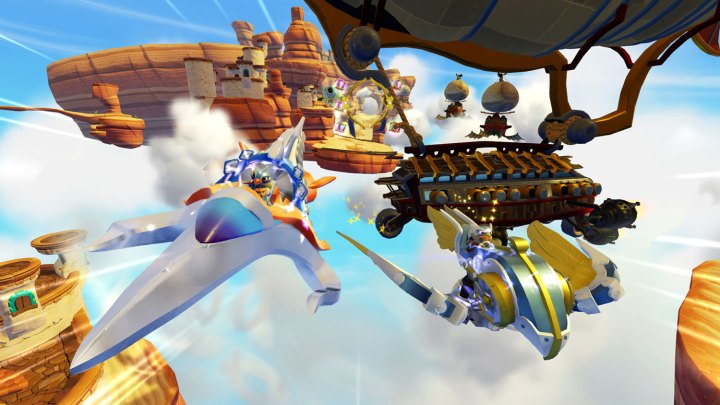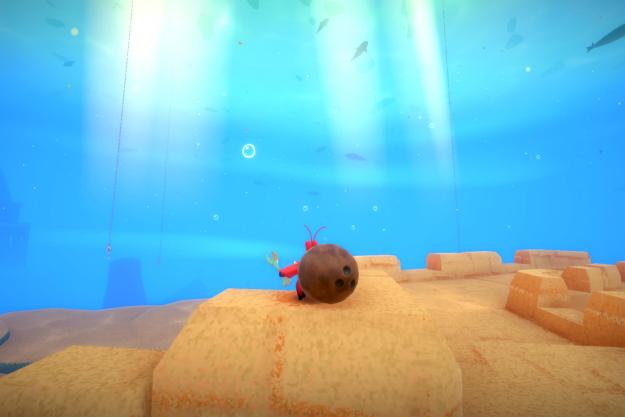
Now firmly entrenched as the developer of the Skylanders games along with Toys For Bob, studio Vicarious Visions has made the family-friendly franchise its sole focus after years of developing a long list of critically praised, licensed properties for handheld platforms. Leading the studio is company president Guha Bala who, along with his brother Karthik, co-founded the company back in 1990 when the pair were still in high school.
During a visit to Vicarious Visions’ studio just outside of Albany, NY, Digital Trends spoke at length with Guha Bala about the evolution of both the Skylanders franchise and the studio itself, as well as the increasingly crowded, billion-dollar genre that Skylanders and Vicarious Visions played a key role in creating.
The Skylanders games have been released on a yearly cycle, but when does planning actually begin on each installment of the franchise? How soon after you finish working on one release do you have to start planning the next one?
Guha Bala: We think about the future all of the time. But when the idea actually originates can be years before we start active work on it. In a sense, we have a hopper of ideas, and the next game that we do, it might not be the right time or opportunity for that particular idea to come about. It can be for a few reasons. Maybe the technical approach doesn’t exist right now, or maybe it’s not the right time creatively to do it as well. So there’s a bit of a road map, but there’s also also a hopper of ideas.
What has to happen for one of those ideas to make its way out of the hopper and into the development conversation?
Bala: It’s a confluence of things. A confluence of where the franchise is, where the storyline is, where technology and our abilities are, and where the cost of getting physical things done is. When those come together in the right manner, you really have the chance to create a magical and physical experience with the toys you create and an awesome visual experience with the games. That’s the convergence we look for.
That set of ideas and where we can head next comes up well in advance of any actual developments, so we have ideas for the future and the next game even before SuperChargers is finished. In the case of Swap Force [the 2013 installment and the first with Vicarious Visions as lead developer], the idea for that originated in a different place more than a year and a half before Spyro’s Adventure [the first installment of the franchise] even came out. Good ideas come from all kinds of places, so we keep that in mind and keep inventory of all the ideas coming out. We generate these ideas all the time [and] there are so many things that aren’t put into the game that we put in a hopper and wait for the right time.
The Skylanders franchise has developed an extremely active, and very vocal fanbase that is constantly discussing what they hope to see in future installments, making suggestions and requests in online forums, and so on… Is that something you keep on your radar as a developer? How do you strike a balance between being attentive to fans and innovating on your own terms?
Bala: Enthusiasts are important. What we know from kids in general is important. How we test with our users is important. All of that stuff is important, but having simple, unique creative insights is the heart of all this. And that’s stuff you can’t do via surveys. You can’t just do it by simply incorporating an idea someone else had in some way. . . . We take so much into account over the course of development, but the actual insights come from a place of being able to do the unpredictable — the things that surprise and delight. If it was all based on responding to the marketplace, everyone would already know what we’re doing.
Vicarious Visions has followed an interesting path over the years, evolving from a studio that had success juggling a lot of well-known licenses to a studio with a very singular focus on one particular franchise. How has this shifting focus changed your over-arching philosophy as it pertains to the studio’s goals and game development?
Bala: I think we’ve had to reinvent ourselves as a studio and creative enterprise many times, and the reinvention has been on a consistent pathway to doing more impactful, more original, and even more creative ideas – and definitely more ambitious ideas. . . . Even Skylanders is a reinvention of what it used to be. A game like Skylanders, you can’t make five of these at once. There’s no company that could handle that — even a company the size of Activision Blizzard. It takes a lot to make just one game a year, and even within that there’s a huge amount of complexity. With the scope of a game like this, you break down a big team into its constituent units and you have a character team that’s about a dozen people, a levels team that’s about 20 people, and it’s all integrated between artists, designers, programmers, and that sort of thing. Each one is highly integrated. It’s one product and one vision, but there really has to be a modular effort that goes into it.
When your team spends so much time focused on a single franchise, how do you keep things fresh?
Bala: I would say that even though we have a single franchise focus right now, the emphasis is all about diversity of creative ideas — building reinvention into the plan as opposed to being reactive to external forces. The focus around the brand allows us to take a lot of risks with the brand. We have to do that in order to keep the brand healthy and active and so forth.
When you first got involved with the Skylanders franchise, the toys-to-life genre was still pretty small, but now you’re competing with the Disney Infinity games and soon, a LEGO franchise, too. Both of those franchises lean heavily on their licensed characters and universes, but with the exception of Donkey Kong and Bowser appearing in SuperChargers, you haven’t really gone down the licensing road with Skylanders. Do you feel any pressure to do so?
Bala: Our competitors are using outside licenses and such, but if our thinking was “Let’s go get outside licenses, too,” we’d be competing with people on the same basis. The heart of competitive strategy is how to do something different that’s uniquely valuable, and not do the same thing and ride to the bottom. So for us, the differentiation in Skylanders is the insight, innovations, and creative ideas that are only possible here. We invest in the people who can bring that to life, who can make characters that stand on their own and don’t exist anywhere else and are just awesome as game characters. That’s the heart of our strategy.
And when we look at Disney, and LEGO entering later this year, and Nintendo entering last year, we’re still the market-share leader in that category. Our characters are only three or four years old. So there’s no guarantee on the future, but I think a novel strategy is better than a strategy based on imitation.
Shifting gears, you announced that SuperChargers would be available on a long list of iOS devices, but no Android this time around. The last installment of the series seemed to be playable on pretty much everything, so what changed?
Bala: Right now, there are no plans for Android. We went broad with the platforms last time, and each time we release a game we try to learn something from the marketplace with different experiments. Last time we went high-end iOS, high-end
When you think about the future of the Skylanders franchise, how long do you think you can keep iterating and reinventing it? Is there a five-year plan? A ten-year plan? How far ahead can you realistically plan?
Bala: We do plan, and we do think about this as more than a beloved two- or three-year franchise. [We think of it as] more like a 30-year franchise. If you say Mickey Mouse has been around 50 years or Mario has been around 30 years, we can say Skylanders should be in there, too. But to do that, we have to shepherd it. We have to make it feel special and fresh each time. Exactly where we’ll be in 3-5 years, I don’t know. The approach is really about investing in the people and the methodology to be really creative, and making sure we always have great ideas in the hopper and that we figure out the right time to bring them out. That’s been the approach so far, and I think that’s the key to making it to that long-term place. But the guys who plan around knowing exactly where they’ll be in ten years… It doesn’t really happen that way.
Skylanders: SuperChargers is available for PlayStation 3, PlayStation 4, Xbox 360, Xbox One, Wii U, and iOS.




